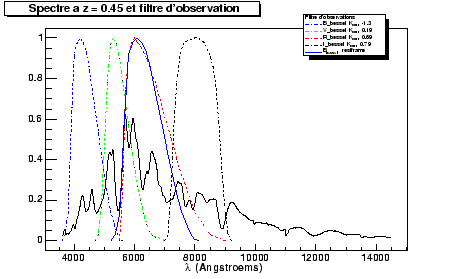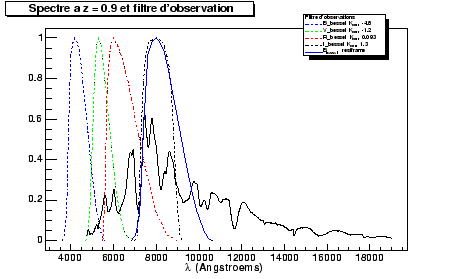The choice of the filters is dictated by the objective in shift towards the initial red. To make measurements of distance with supernovæ, it is necessary to measure flux in a filter which corresponds to the filter B in the reference frame of the supernova. For redshifts around 0.45, the filter corresponding is the filter R (figure 7.3 ). In addition, it is in the blue part of the spectrum that the supernova emits the most light. It is thus in the filter corresponding that detection will be easiest.
 |
 |